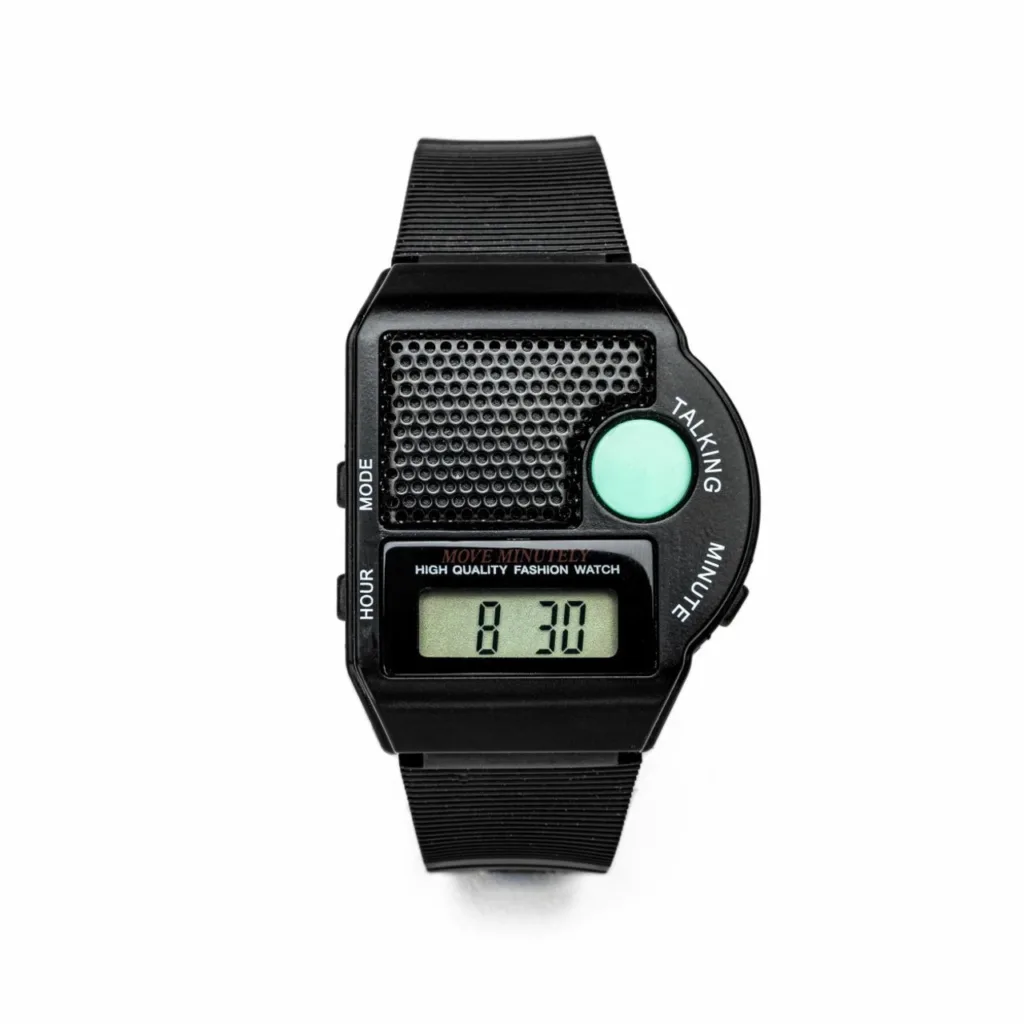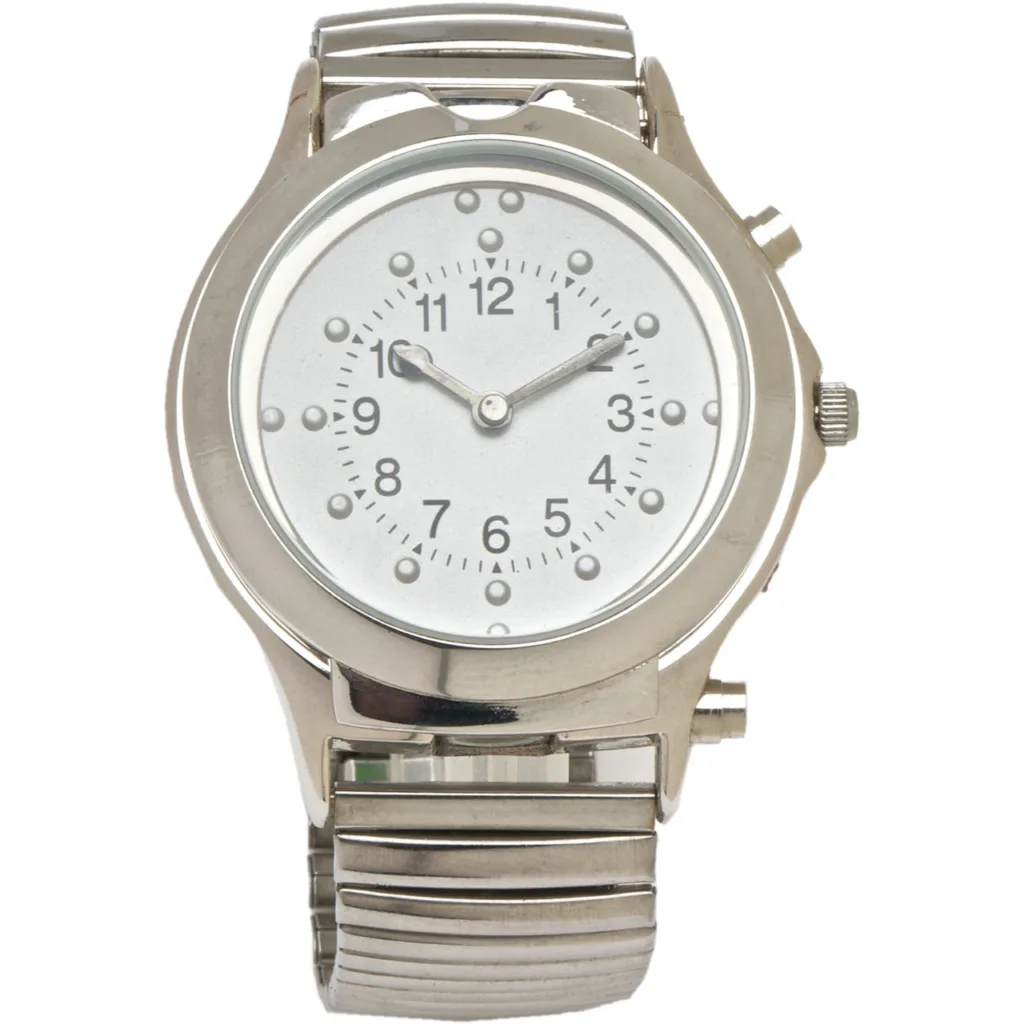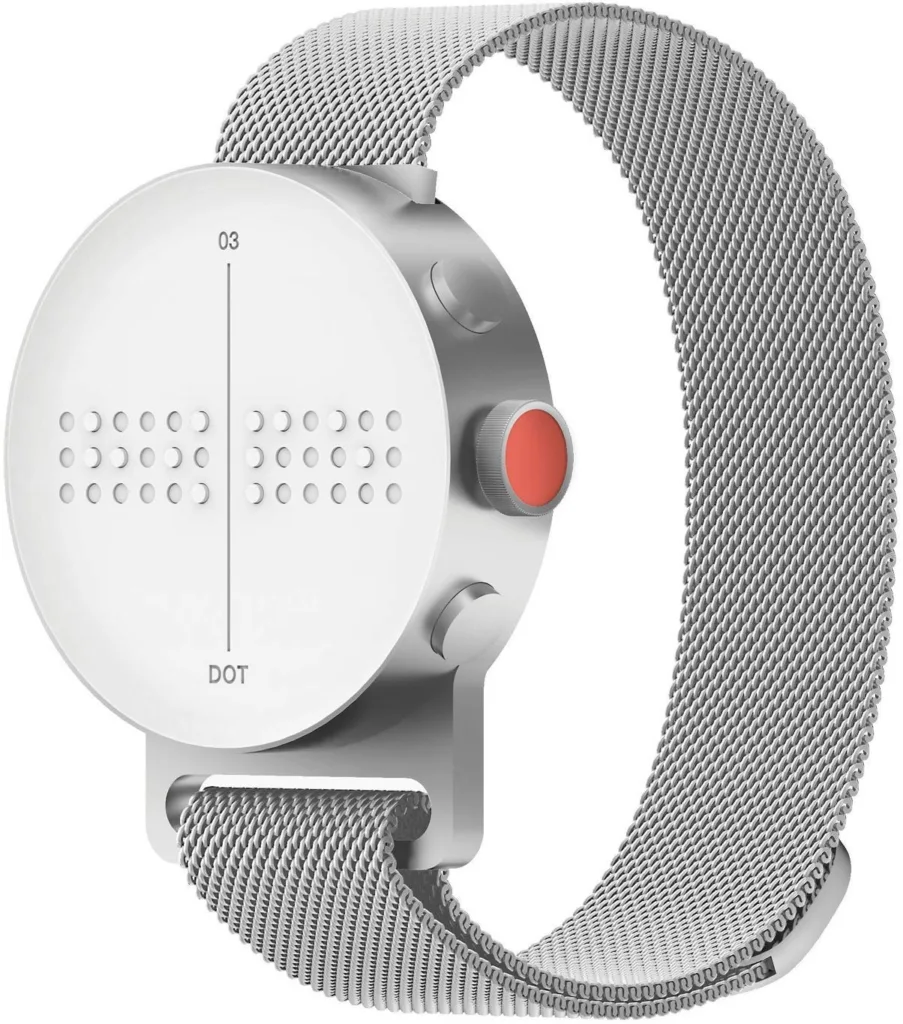Choosing a Watch or Clock if Blind or Low Vision
When you are blind or have low vision, choosing an accessible watch or clock is a very personal decision. This guide is designed to help you find the perfect timepiece, focusing on usability, accessibility, and some of the latest technology. We’ll explore various options, from traditional talking clocks to high-tech smartwatches, ensuring you can find a device that suits your needs and lifestyle.
Talking Clocks and Watches: The Power of Auditory Feedback
Talking clocks and watches are a popular choice, providing time announcements through a simple button press. Look for features that prioritize ease of use, including:
 Talking watch from LS&S Products
Talking watch from LS&S Products
- One-Button Simplicity: The most accessible models have a single button to announce the time, reducing confusion and the need to memorize complex commands.
- Adjustable Volume: A crucial feature for those with hearing loss, a volume control allows you to customize the sound level.
- Portability: Many talking devices are lightweight and battery-operated, making them easy to carry in a pocket or purse for on-the-go time checks.
Visual Display Clocks: Enhancing Readability
For individuals with low vision, a visual display can be a valuable feature. When considering these models, prioritize high-contrast and large displays:
- High Contrast: Opt for black numbers on a white background or white numbers on a black background for maximum visibility.
- Large, Non-Glare Displays: Large, clear numbers are essential. A non-glare surface minimizes reflections, making the display easier to read in various lighting conditions.
Tactile (Braille) Watches: Time You Can Feel
 Braille Talking Watch White Face Silver Case and Band from LS & S Products
Braille Talking Watch White Face Silver Case and Band from LS & S Products
Tactile watches, often called braille watches, allow you to read the time by touching raised markers and hands. These are ideal for individuals who prefer a non-auditory method of time-telling. Key features to consider include:
- Durable and Accessible Design: Look for a sturdy latch and hinge that is easy to open and close independently.
- Raised Markings: These watches use a system of raised dots (one, two, or three) to mark the hours, allowing for tactile recognition.
- Larger Face: A larger watch face with distinct markers is often easier to read by touch, especially for new users.
Advanced Technology: Smartwatches and Specialized Devices
The landscape of accessible timepieces has expanded significantly with high-tech options offering a blend of traditional features and modern connectivity.
Smartwatches with Accessibility Features
Modern smartwatches, such as the Apple Watch and Google’s Wear OS watches, are becoming more accessible. They offer a wide range of features customizable for individuals with blindness or low vision.
- VoiceOver and TalkBack: These built-in screen readers on Apple Watch and Wear OS, respectively, provide spoken descriptions of what’s on the screen, allowing users to navigate menus, read notifications, and check the time without a visual display.
- Haptic Feedback: Smartwatches can use vibrations to communicate information, such as alarms, notifications, and even the time. Some smartwatches offer unique haptic patterns to indicate different types of alerts.
- Large and High-Contrast Displays: The ability to increase font size and use high-contrast modes makes the visual display more accessible for those with low vision.
- Voice Commands: Using voice assistants like Siri or Google Assistant, users can set alarms, check the time, send messages, and control other features with simple voice commands, eliminating the need for a physical interface.
Specialized High-Tech Timepieces
Beyond mainstream smartwatches, a new generation of products is being designed specifically for accessibility from the ground up.
 Dot Watch
Dot Watch
- The Dot Watch: This revolutionary smartwatch uses a refreshable braille display. It allows users to read the time, notifications, and text messages through a series of raised braille cells on the watch face. The Dot Watch seamlessly connects to your smartphone, offering a truly innovative and accessible user experience.
- The Bradley Watch: This unique and stylish timepiece offers a tactile way to tell time without a traditional visual display. It features two magnetized ball bearings—one for the hour and one for the minute—that move along separate grooves on the watch face. This allows users to simply touch the watch to feel the position of the balls and determine the time.
Key Considerations for All Timepieces
Regardless of the type of timepiece you choose, keep these universal principles in mind:
- User Input is Essential: The individual who will be using the device should be involved in the selection process to ensure it meets their specific needs and preferences.
- Ease of Use: A product that is simple to operate is always the best choice. Consider how easy it is to set the time, change the battery or charge, and use the alarm.
- Durability and Quality: Choose a device that is well-made and can withstand daily use.
- Purpose: Does the user need an alarm? Do they want to control more advanced settings? Matching the product’s features to the user’s needs is crucial.
Where to Find Adapted Timepieces
You can find a wide range of adapted timepieces, including talking watches, tactile clocks, and specialized smartwatches, from various sources:
- Online Retailers: Many specialty websites and large online retailers carry a full range of accessible products.
- Assistive Technology Stores: Stores specializing in assistive technology often have knowledgeable staff who can help you find the perfect device.
- Big Box Stores: Some large department and drug stores now carry a selection of high-quality low-vision and talking watches.
Learn More